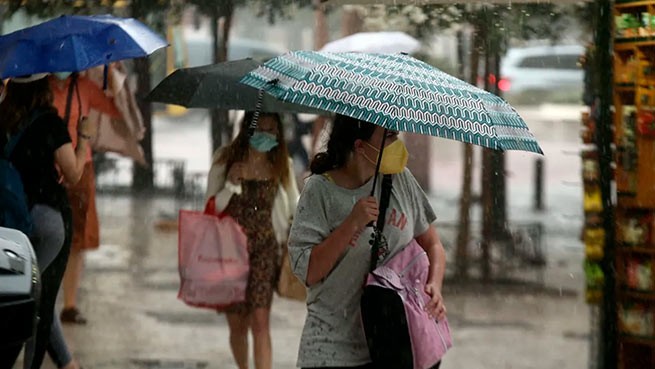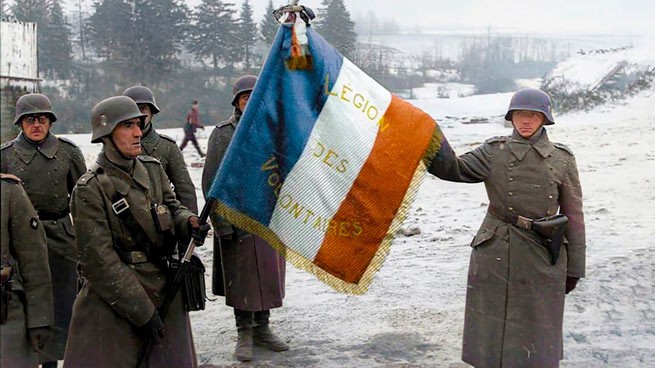“Neo-Nazi tendencies” And “an ambitious attempt to organize new SS units” attributed the Kremlin to French President Macron in a new statement after Macron said: “We are considering sending military forces to Ukraine if necessary.”
The official representative of the Russian Foreign Ministry Maria Zakharova, in response to this, provided historical information about the fall of Berlin in 1945 and warned that the French who dare to defend Zelensky will face the same fate.
A Foreign Ministry spokeswoman pointed out to Macron contradictory moments in French history:“In April 1945, Berlin was defended by the French SS division “Charlemagne” (“Charlemagne”) and others. They also directly defended the “Führerbunker” – Hitler’s bunker. They were among the last to be awarded the Nazi Order of the Knight’s Cross in the Third Reich. The French SS men from Charlemagne became the last defenders of the Reichstag and the Reich Chancellery.”
“Emmanuelle, have you decided to organize the Charlemagne II division (Charlemagne deux) to defend Zelensky’s bunker?” Zakharova addressed the French president“.
33rd SS Grenadier Division “Charlemagne” (Charlemagne) – a unit of French volunteers (German: 33 Waffen-Grenadier-Division der SS “Charlemagne”) as part of the Wehrmacht, and then in parts of the Waffen-SS. The strength of the unit in 1944 ranged from 7,340 to 11,000 people. In 1945, she took part in the defense of Pomerania, where she suffered heavy losses. Later the division was sent to support the Berlin garrison.
On the night of April 23-24, 1945, the commander of the Charlemagne division, Brigadeführer Gustav Krukenberg, received an urgent telegram from the Berlin Reich Chancellery in Neustrelitz with an order to immediately come to the defense of the Reich capital. In the ranks of the French division, which numbered about seven and a half thousand fighters at the beginning of 1945, by that time there were no more than 1,100 left. A labor battalion was created from those who wished to stop fighting. 300 Charlemagne volunteers decided to fight to the end and volunteered to break through to Berlin. Of these, Krukenberg formed an assault battalion.
On April 24, the battalion set off for Berlin in nine trucks. They managed to break through to the capital of the Reich through the northwestern suburbs in Nauen a few hours before Soviet troops completely surrounded the city.
Having reached the Olympic Stadium in Charlottenburg, the French regrouped and replenished their supplies of ammunition from an abandoned Luftwaffe warehouse. The battalion was divided into 4 rifle companies, 60-70 people each, and placed under the command of Hauptsturmführer Henri-Joseph Fenet instead of Krukenberg, who was placed at the head of the Nordland division, which received the French under its tactical subordination. Following this, the Charlemagne Sturmbattalion, under constant Soviet bombing, moved to the east of Berlin to the Neuköln area, where it entered into battle with the advancing Red Army.
After fierce battles on Hasenheide and during the defense of the Tempelhof airfield on April 26, the French retreated west through the Landwehr canal and, fighting heavy defensive battles in the following days with many times superior enemy forces in the Kreuzberg area, gradually retreated to the city center, where they took part in the battles for the Reich Chancellery and a block of government buildings, which inflicted heavy losses on the enemy. On the day of fighting on April 28 alone, of the total number of 108 Soviet tanks destroyed in Berlin, the French of Charlemagne destroyed 62. The last command post of the division was located next to the Reich Chancellery in the underground pavilion of the Stadtmitte metro station in a broken carriage, lit by candles.
On 1 May the French continued to defend the Reich Chancellery and fight on Leipzigstrasse, around the Air Ministry and on Potsdamerplatz. On the morning of May 2, following the announcement of the capitulation of the German capital, the last 30 Charlemagne fighters out of 300 who arrived in Berlin left the Reich Chancellery bunker, where, besides them, no one was left alive.
It is known that the captured French were sent to the Gulag, from where no one returned, since France did not even ask for them… Remains of the division SS Charlemagne in May 1945 surrendered to American troops.
A remarkable fact. On May 6, 1945, in Bavaria, 30 km from the town of Bad Reichenhall, 12 Frenchmen who served in the Charlemagne division and had just left the hospital after being wounded surrendered to American troops without resistance. The next day it turned out that on May 7 the city was transferred to the zone of responsibility of French units from the troops of General Leclerc. A general arrived at the place where the prisoners of war were transferred. Having learned that the soldiers in German uniforms were French, he became indignant and began to insult them in every possible way, calling them “boches” and “traitors.” When he uttered the words “How could you, the French, wear a German uniform?”, one of the prisoners could not stand it and boldly replied: “Just like you, general, can wear an American one.”
After these words, Leclerc flew into a rage and ordered the prisoners to be shot. According to one version, the general gave such a cruel order and contrary to the Geneva Convention, being under the painful impression of inspecting the death camp in Dachau, where Leclerc supposedly had been the day before. Be that as it may, the next day, May 8, 12 French SS men were taken out to be shot. At their request, a Catholic priest spoke with them. Further, the condemned flatly refused to be blindfolded or “humanely” shot in the back. Immediately before the execution, they began to sing the Marseillaise and shout “Vive la France!”, looking into the faces of the firing squad.
Embittered by the “unrepentant” obstinate “Charlemagne”, the general ordered not to bury the bodies, but to leave them in the clearing. Only three days later, according to the local population, they were buried by the Americans.







More Stories
Xi Jinping's leverage: can China encourage Putin to stop the war in Ukraine
Investigation: an 8-month-old girl taken from Kherson was adopted into the Russian Federation, changing her name and place of birth (video)
How Ukraine plans "hide" F-16s after their transfer by Western allies